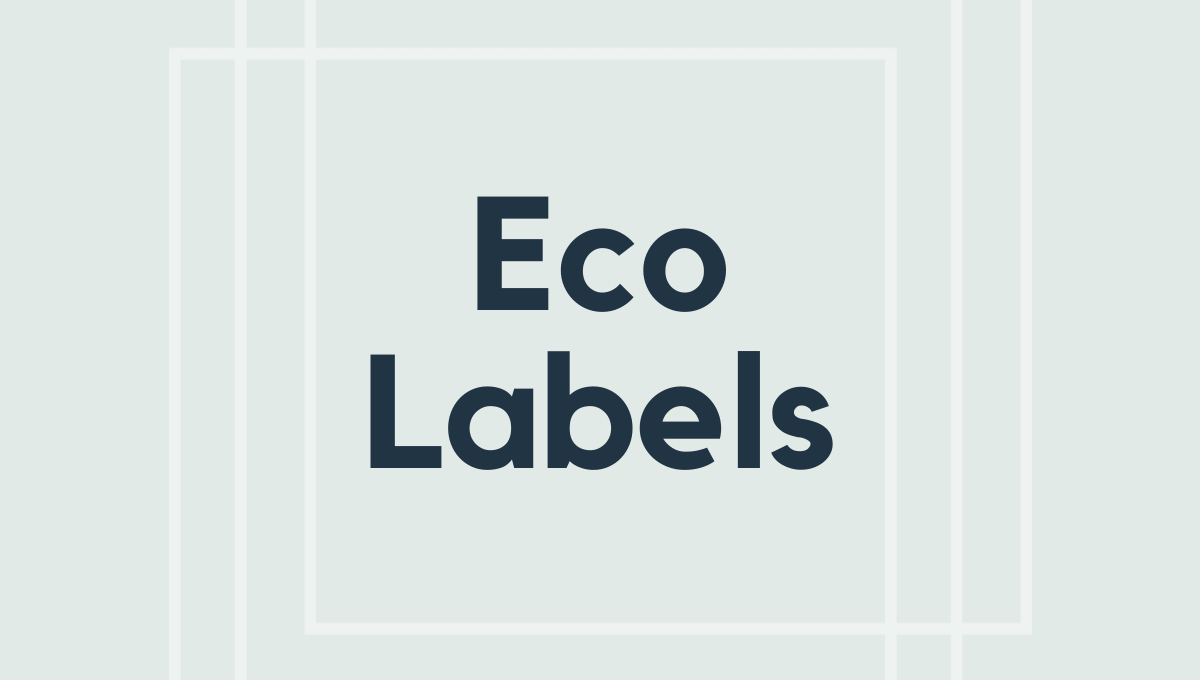What are Ecolabels?

If we look ten years back, growing any business was easy. The criteria back then was only to create high-quality products. But now it's changing.
Competing on quality alone is not enough. Now, customers consider so many factors before purchasing from a brand. One of them is eco-friendliness, which has led to the innovation of 'eco-labels.'
These labels communicate necessary information regarding recyclability, warnings, and making raw materials. Simple and clear symbols are used so anyone can understand them. It helps in making informed decisions.
Keeping climate change in mind, many consumers are making conscious changes and choosing eco-friendly brands. According to stats, more than 30% of products in the market are labeled as sustainable, and so far, they are seeing exponential growth.
In this article, we'll discuss ecolabels and everything you need to know about them. So let's get started.

Source: Pexels
What are Ecolabels?
Ecolabels are symbols, logos, or certifications on products to indicate their environmental and ethical attributes. They serve as a way for consumers to make informed choices by identifying products that meet specific environmental and ethical standards.
Ecolabels can cover various criteria, including energy consumption, organic farming, fair labor practices, sustainable sourcing, impact of product, etc.
So when a customer picks a product and sees this label, they'll immediately understand that it is eco-friendly. But you might wonder who even issues these labels.
Many private bodies and national and international organizations are responsible for issuing ecolabels. They measure the product's environmental performance to ensure it meets environmental standards. But the credibility can vary depending on the type of ecolabel and who issued it.
That's why there is an emergence of green products in the market.
Types of Ecolabeling
There are three major types of ecolabeling that you should know. They vary based on claims and issuers. Let's understand it in detail.
Type I: The 'Classic' Label
These ecolabels are environmental certifications from third parties. In this, the product or services meet the criteria for international standards. But it's not given just because the company uses eco-friendly packaging. It involves the entire life cycle considerations of the product, starting from:
- Manufacturing process
- Materials utilized
- Packaging
- Impact
This type of ecolabel is considered the most credible. Do you know why?
Because independent organizations issue it, multiple governing bodies set the criteria and requirements, and all of them are included in decision-making.
For example, the Forest Stewardship Council is an organization that's responsible for granting Type 1 ecolabels.
Type II: Voluntary or Self-declaration Labels
These labels are self-declared claims made by the manufacturer or the seller.
But what's the basis of that?
These claims rely heavily on the company's transparency and honesty to make an impact on the environment. So even if they don't have any third-party certification, the product is sustainable.
Many companies might have used terms like renewable, compostable, etc. These fall under the umbrella of claims of sustainability.
Type III: Environmental Product Declarations
Have you seen a report card?
In which there's complete information according to every subject. In this type of ecolabels, something similar happens.
These report cards include detailed data on a product or service's environmental impact. This report card is compared with international guidelines to check whether the product or service abides by international rules set for sustainability.
It provides the basis to add ecolabels relevant to the product.
But this type of ecolabel is expensive and involves extensive research. Moreover, ensuring to meet international standards can be another big challenge.
Basic Things You Should Know About Ecolabels
Ecolabels don't automatically mean that a product is environment-friendly. Some ecolabels are used to show that a product has controversial ingredients or that the sourcing of materials is not done using the right approach.
So here are some of the ecolabels you should know about.
ECOLABEL is also referred to as Daisy or Marguerite. It is a basic EU symbol in a flower and crown shape. This EU logo means the product abides by the strictest environmental set of rules and regulations by the Member States.

Source: cws
But do you know what its national equivalent is?
ECOLABEL = Znak EKO
Since 1998, the Polish Centre for Testing and Certification has given awards to industrial products.
Next is the 'Safe for Ozone' mark.
You might have seen this on cosmetic packaging or household appliances. So what does it mean?
It indicates that the product is free of chlorofluorocarbons. It directly threatens the ozone layer and contributes to its depletion.
If you've ever bought electrical appliances, you might have noticed the label' Energy Star.' So what does it mean?
This is awarded by the US Environmental Protection Agency, which indicates that the product is energy efficient. This ecolabel is also widely used in the European Union. There is a broad range of these labels. Some of these are as below.
- FSC: Wood doesn't harm the environment.
- PEFC: Sustainable forest management.
- Rainforest Alliance: Eco-friendly, respects locals.
- Green Lungs: NE Poland eco-award.
- Öko-Tex 100: Safe textiles.
- Carbon Reduction Label: Low carbon emissions.
Are Ecolabels the Same As Brand Labels?
There is a huge difference between the custom labels you usually use for your eco-friendly products and ecolabels. So here's a table of differentiation that will help you get clarity on both labels.
|
Aspect |
Ecolabels |
Normal labels |
|
Purpose |
Indicate environmental and ethical attributes, helping consumers make sustainable choices. |
Provide basic product information, branding, or marketing details. |
|
Environmental Focus |
Primarily focused on eco-friendliness, sustainability, and ethical practices. |
It may or may not address environmental concerns. |
|
Third-party Verification |
Often subject to third-party certification or verification to ensure credibility. |
Typically, do not undergo third-party assessment or verification. |
|
Criteria & Standards |
Certification bodies set specific environmental credentials and ethical criteria and standards. |
It is primarily based on marketing or branding criteria and may lack specific standards. |
|
Examples |
Energy Star, USDA Organic, Fair Trade Certified. |
Brand logos, product names, sizes, and nutritional facts on food items. |
Objectives of Ecolabeling
If you're making efforts to make your product eco-friendly, it's important to have ecolabels. But why?
Isn't being environmentally friendly enough?
When you use an ecolabel, it tells the consumers about your efforts. It increases your credibility in the eyes of customers. It also encourages customers to be responsible.
Ecolabels lead to corporate social responsibility. Thus pushing them to implement ethical and sustainable practices in their business. This improves the image of the brand and reputation as well.
It also encourages companies to find solutions to make their products or services eco-friendly, which opens the door to innovation and creativity.
Pros and Cons Of Ecolabels
Now that you have a better understanding of ecolabels, it's time to look at both positives and negatives. So you can understand whether this option is best for me or not. Now, let's look at some of its benefits and drawbacks.
Pros
- Market Advantages: Ecolabels can boost a product's reputation and sales, as eco-conscious consumers often prefer labeled items.
- Consumer Empowerment: It informs consumers about products' environmental and ethical attributes, allowing them to make eco-conscious choices.
- Environmental Benefits: They encourage businesses to adopt sustainable packaging and labeling practices, reducing resource consumption and environmental impact.
Cons
- Greenwashing: Some companies use misleading ecolabels or make false environmental claims, leading to consumer confusion. They say their product categories fulfill environmental criteria, which are exaggerated claims.
- Certification Costs: Obtaining and maintaining ecolabel certifications can be expensive for small businesses.
3 Tips For Eco Label Applications
There's no doubt about how important ecolabels are for your product. But to voice its importance properly and get maximum benefit from it, you should implement best practices and guidelines. It ensures you get exceptional results from your ecolabels.
1. Get Clarity About Purpose
Before starting anything, you should know WHY you are even doing it.
You can get clarity by having an answer to WHY, which sets a strong foundation for your ecolabeling campaign. Have clear goals that will help you analyze the campaign effectively.
Not only this, you'll also avoid any unnecessary confusion that might occur along the way. Don't forget to think about consumer preference at this stage. Many customers prefer brands that abide by sustainable consumption practices.
2. Clear The Fog
You might wonder how I can know if a labeling program is trustworthy. Remember, these programs have clear, measurable standards for both:
- Environmental
- Society
The scale is based on scientific evidence collected.
You should also consider stakeholder input to ensure everything is relevant. It helps enhance the way customers perceive your products.
3. Set SMART Goals
It might be difficult to achieve ecolabel, but it's not impossible. Even if the product fails to comply with all the requirements, you can make changes and try again.
Keep reviewing and updating the goals with time. It's important to stay relevant.
Consumers are more inclined to make sustainable choice, and ecolabels show environmental preferability. Incorporate organic standards in your product manufacturing to reduce carbon footprint.
Ending Thought
Climate change is a burning topic because, with every passing year, living organisms are facing its severe consequences. It's time companies start making conscious decisions to make their products eco-friendly.
Because if things get out of hand, we might lose so many incredible things in the world. Ecolabels, tell your customers about your efforts.
It can lead to increased leads and positive publicity. Remember that even one slight change can leave a huge, long-lasting positive impact.
